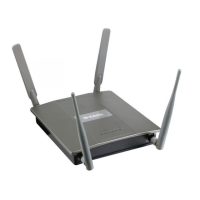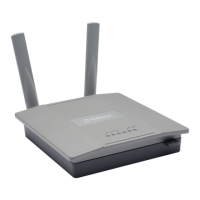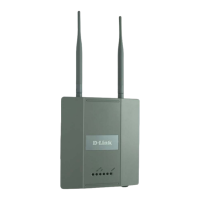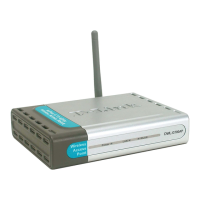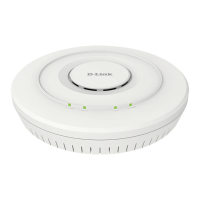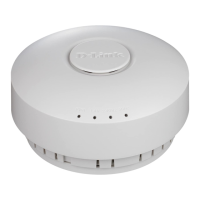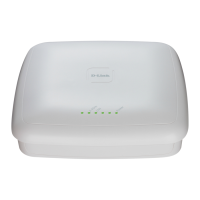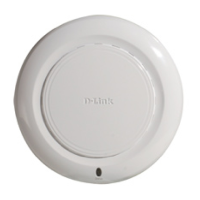Loopback Interfaces
D-Link Unified Wired and Wireless Access System
Oct. 2015 Page 300
D-Link UWS User Manual
Loopback Interfaces
D-Link DWS-4000 Series software provides for the creation, deletion, and management of loopback interfaces.
They are dynamic interfaces that are created and deleted via user-configuration. D-Link DWS-4000 Series
software supports multiple loopback interfaces.
A loopback interface is always expected to be up. As such, it provides a means to configure a stable IP address
on the device that may be referred to by other switches. This interface provides the source address for sent
packets and can receive both local and remote packets. It is typically used by routing protocols.
A loopback interface is a pseudo-device for assigning local addresses so that the router can be communicated
with by this address, which is always up and can receive traffic from any of the existing active interfaces. Thus,
given reachability from a remote client, the address of the loopback can be used to communicate with the
router through various services such as telnet and SSH. In this way, the address on a loopback behaves
identically to any of the local addresses of the router in terms of the processing of incoming packets.
Loopbacks Configuration
Use the Loopbacks Configuration page to create, configure, or remove loopback interfaces. You can also set
up or delete a secondary address for a loopback.
To display the page, click LAN > L3 Features > Loopbacks > Configuration in the navigation tree. If no loopback
interfaces exist on the system, the page only has two fields, as Figure 190 shows.
Figure 190: Loopback Configuration—Create
Additional fields display depending on whether or not a loopback has already been created, as shown in
Figure 191.
Figure 191: Configured Loopback Interface
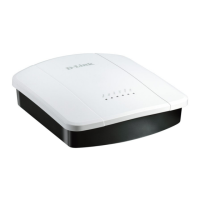
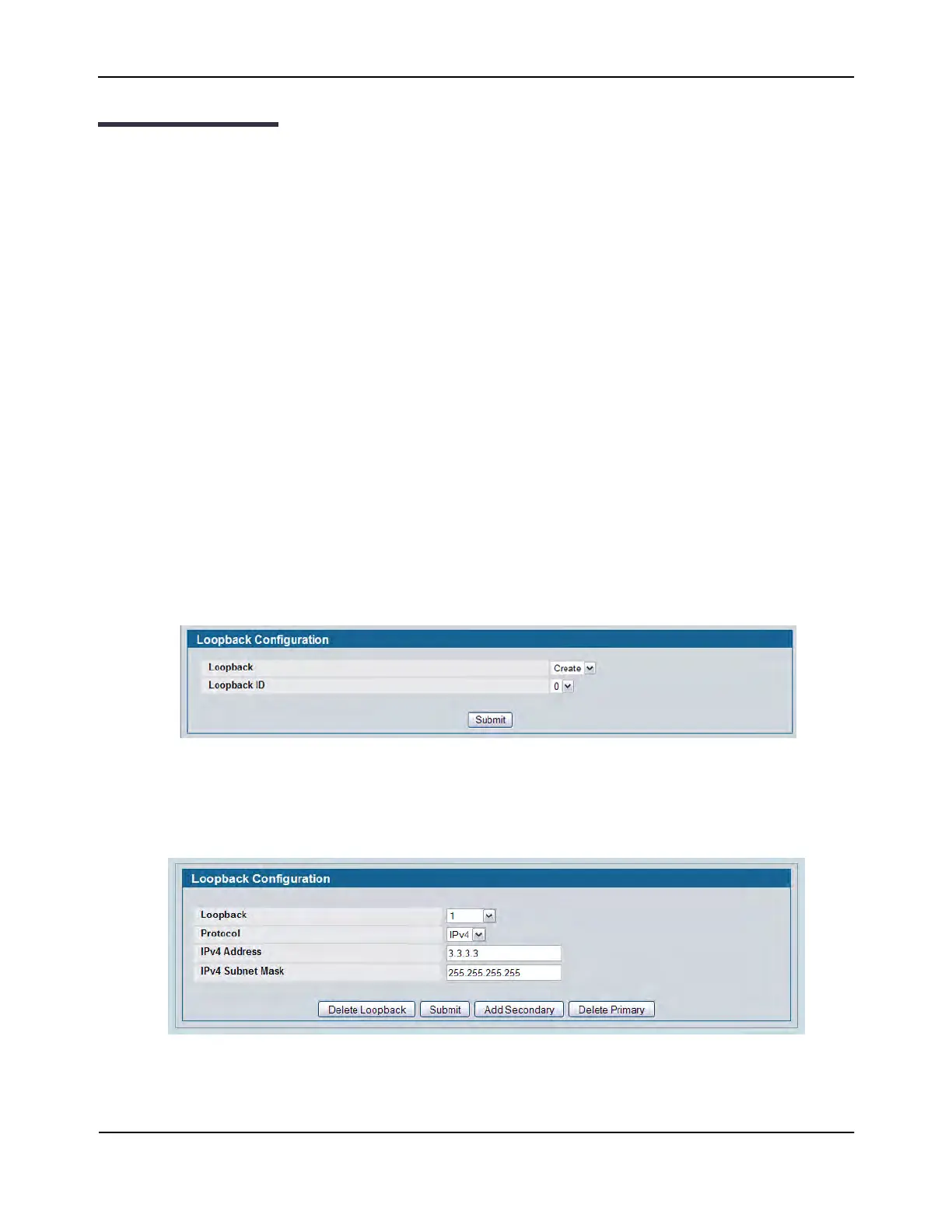